Leipzig is located about 180 kilometres from Berlin and less than 1,5 hours by train, which makes it a perfect day trip destination. Leipzig is an art lover’s paradise, thanks to its extensive range of galleries, museums, and concert halls. The city was fairly lightly bombed during World War II, but unfortunately, the Soviets destroyed many buildings and statues in the city. Following the reunification of Germany, Leipzig has been growing rapidly, becoming popular with young people and gaining the nickname "Hypezig." There are many reasons to visit Leipzig, including its rich musical history and unmissable monument of the Battle of the Nations. So here is your guide on how to spend a day in this awesome city. If you arrive by train, you will start your journey from the central railway station.
Central Railway Station
Leipzig's Central Station, with 23 platforms, almost 300 meter facade and some 80,000 square meters of floor area, is the largest terminus in Europe. The station opened in 1915, and then it was one of the largest railway stations in the world. During the 1990s, Central Station was completely renovated and modernised. It is also one of the most beautiful train stations in all of Germany, featuring some magnificent architecture. All train lines of the S-Bahn pass through the tunnel underneath the station opened in 2013. Over 140 shops and restaurants on three levels invite visitors to browse, shop, and dine. On Sundays, many shops are open, which is an exception in Germany. In 2020, Leipzig Hauptbahnhof was ranked as the best railway station in Germany and the third-best in Europe.
If you are lucky, you will find a mural of the peaceful revolution near the train station. It seems that soon it will not be available because of construction works.
Mural of the Peaceful Revolution
To the rest of the world, Berlin may forever be associated with the fall of the wall, but it was in Leipzig where the protest movement first gathered pace. Hundreds of thousands of East Germans marched against the GDR regime in autumn of 1989. A mural by local painter Michael Fischer-Art marks the 20th anniversary of Germany’s “peaceful revolution”. The eastern facade is at the Leipzig Marriott hotel.
Monument of the Battle of the Nations
In 1813, Leipzig was the site of the Battle of the Nations. The unified armed forces of Russia, Prussia, Austria, and Sweden prevailed in a decisive victory over Napoleon and his allies on German soil. In the end, 600,000 soldiers from over twenty countries took part in the battle. 100,000 were killed or wounded. One year after the devastating events, the poet Ernst Moritz Arndt had the idea of creating a memorial to honour the fallen. In 1913, the Monument to the Battle of the Nations was open as a national monument. 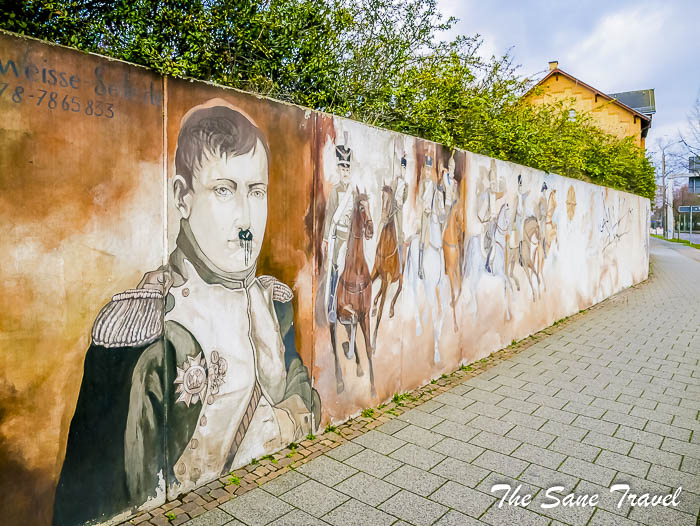
South Cemetery
I almost never suggest visiting cemeteries but this one is an exception. I saw the building of the Chapel of the South Cemetery (Südfriedhof) first from the top of the nearby memorial of the Battle of the Nations and was really impressed without knowing what this building was for. South Cemetery is the largest cemetery in Leipzig with an area of 82 hectares. The chapel with a 60 meter high bell tower opened in 1910. The Neo-Romanesque symmetrical complex of chapel facilities, the crematorium, and the columbarium blend seamlessly into the overall picture. So take a short walk from the monument of the Battle of the Nations and explore it.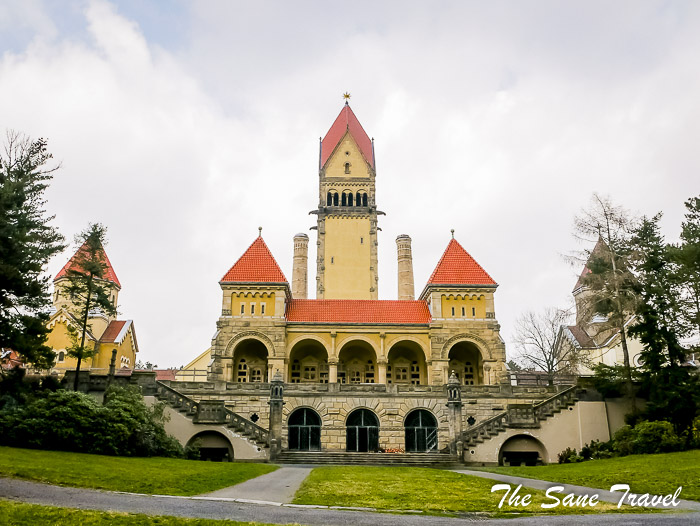
Augustusplatz
Augustusplatz is home to some of Leipzig’s most impressive architectural sights, with buildings that span the past century. The square was originally built in 1785; however, it was heavily destroyed in World War II. Now, you can find there some of the most famous buildings in the city, including Leipzig’s first high-rise building, Kroch-Haus, the Opera House, and Gewandhaus, the only new GDR concert house. It’s also the place where uprisings against the GDR regime started in September 1989.
Student Campus and New Church
Approaching the Leipzig University campus, notice the Panorama Tower. Built by the East Germans in the 1970s, the tower is supposed to look like an open book. The locals call it the “wisdom tooth.” Next door see the Paulinum, a modern glass structure that houses the university student centre and chapel. It looks a lot like a church, and that’s because it commemorates the 13th century Paulinerkirche that once stood there. The Paulinerkirche survived WWII nearly intact. Then, sadly, in 1968, the East Germans blew it up. This new “church” was built in 2007 in the same location.
Mendebrunnen Fountain
The 19th century Neo-Baroque style Mendebrunnen Fountain, located in front of Gewandhaus Concert Hall, is the largest in Leipzig. It is modelled according to the Roman fountains, among others the one on Navona Square in Rome. It presents the characters of tritons, the mythical half fish, half horses. In general, fountain statues symbolize the relationship between man and water.
Gewandhaus Concert Hall
The Gewandhaus does not look very attractive from outside, but it’s worth looking inside, which I did not do. The murals on the sloped ceiling of the reception area are of enormous size.
Kroch-Haus
The Kroch house on Augustusplatz was the city's first “skyscraper” built in 1928 for Jewish banker Hans Kroch by architect Bestelmeyer. It included a 12-story building made of sandstone to remind of the clock tower Torre dell’Orologio, built at the end of the 15th century in Venice. The most important feature of the building is two bell beater sculptures that strike 3 bells. Just below it you see the inscription in Latin, OMNIA VINCIT LABOR, which means "work overcomes everything". If you look more down, you can see a display of the moon phases on the 12th floor, surrounded on the left and right by two lions. The huge tower clock underneath has a size of 4.30 meters in diameter.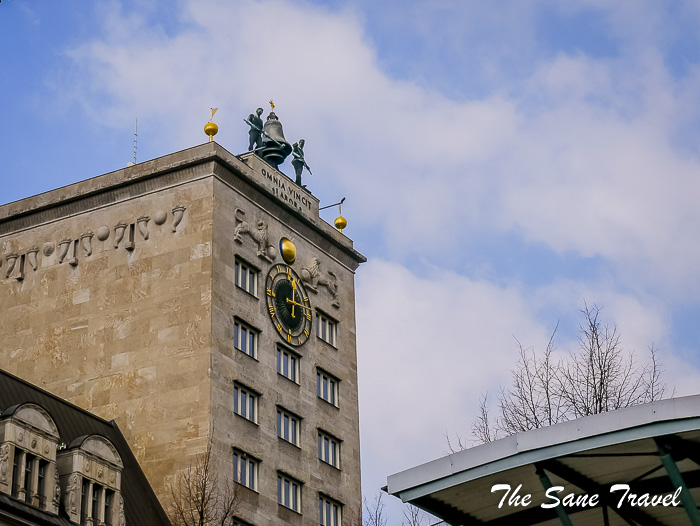
Untimely Contemporaries
(Unzeitgemäße Zeitgenossen)This sculpture was designed by Bernd Göbel in 1989. Parts of it are covered in real gold. It showcases his quirky sense of humour and love of irony. There are five naked figures, each with a specific golden highlight, which represents the figures ‘principles’. For example, you can see the Gilded Wooden Hammer, Golden Laurel Wreath, Gold Nose, and Ear. Göbel gave this sculpture to Leipzig in 1990 as a gift to symbolize ‘the people that have plagued your city’.
Address: Grimmaische Straße
Old Stock Exchange at Naschmarkt
The Alte Börse, or the Old Stock Exchange at Naschmarkt, is Leipzig‘s oldest Baroque building. It was originally built by merchants at the end of the 17th century. Today, the Alte Börse is used for concerts, readings, and theatre performances. 
The Century Step sculpture
The bronze sculpture "The Century Step" (Jahrhundertschritt) was made in 1984 by Wolfgang Mattheuer. The sculpture in Leipzig was set up in 1999 in front of the Forum of Contemporary History. The sculpture symbolizes the relationship of the Germans to the two totalitarian systems in the 20th century. Look at the arms of this brilliant sculpture: one says Heil like the Nazis; one is in a fist like a communist’s. And in the middle is the face of an ordinary German who just wants to hide from these terrifying inhuman regimes. 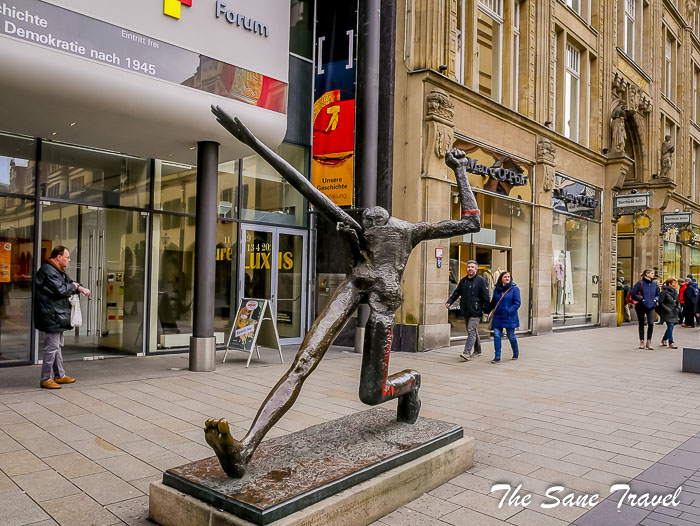
Old Town Hall
Its cornerstone was laid in the middle of the 16th century. The building includes a 53 metre long ballroom. It was used in the past for the royal festivals of Saxon's princes, patrician weddings, craftwork festivals, and student balls. Since 1909, and still today, it serves as the Museum of City History.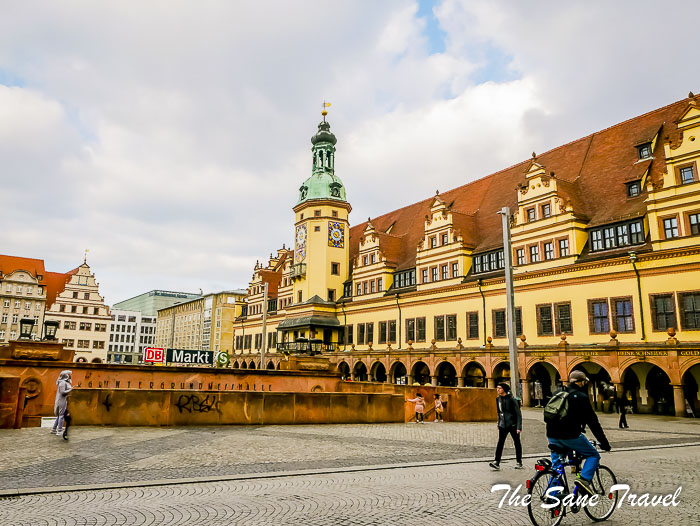
Going further in the Old Town, learn more about the musical history of Leipzig.
Musical History of Leipzig
Leipzig is certainly a city rich in musical history. Richard Wagner was born here. Felix Bartholdy Mendelssohn founded Leipzig Conservatory.Johann Sebastian Bach spent the last years of his life in Leipzig and is buried there. Some other notable composers, such as Robert Schumann and Georg Philipp Telemann, worked in Leipzig, and George Frideric Handel was born just a few miles up the road in Halle.
Bach Memorial
A statue of Johann Sebastian Bach, one of Germany’s greatest composers, greets you at the main portal of St. Thomas Church. Towering on a three-metre-high limestone pedestal, the statue depicts Bach in his role as the musical director of St. Thomas Church.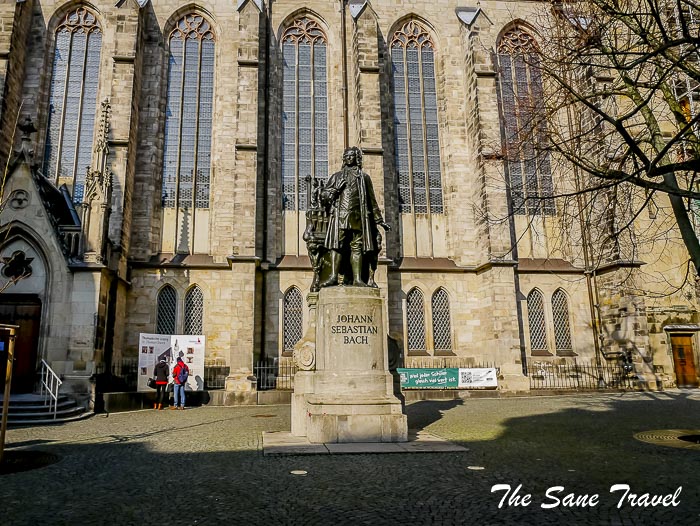
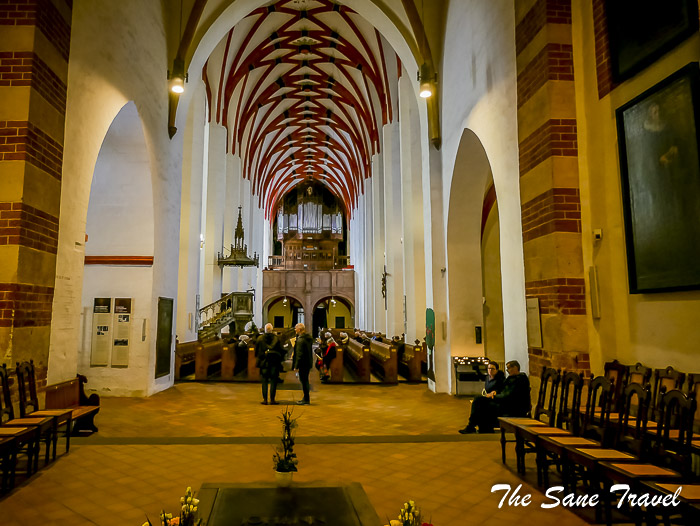
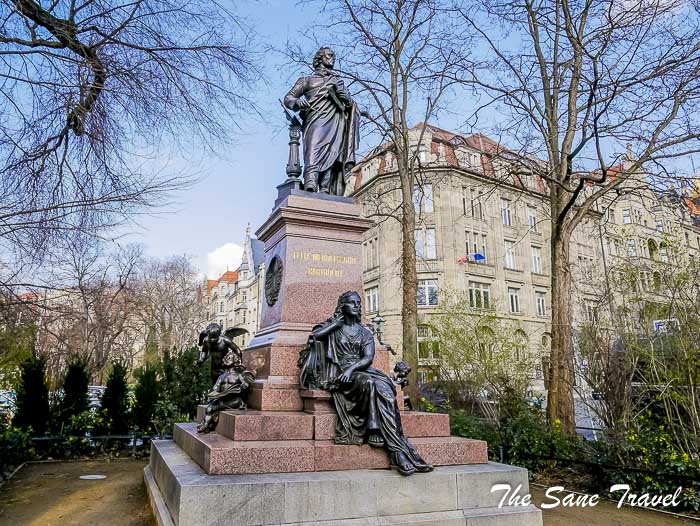
Bachstübl cafe
It’s located opposite the church. The coffee and cake I had there were really delicious.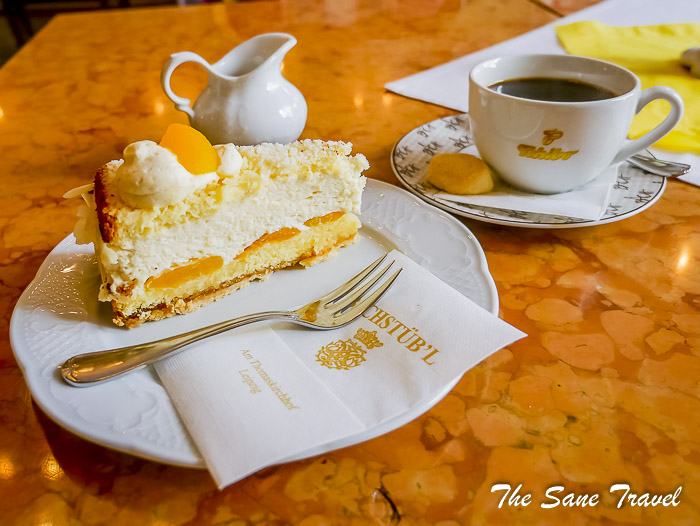
Practical information
How to get to and from Leipzig. If you, like me, go to Leipzig from Berlin, the fastest way to go there is, of course, by train. The cheapest is going by bus, for example by FlixBus. I tried both, getting there by train and going back by bus. The bus station can be found behind the railway station and is called Fern bus station. 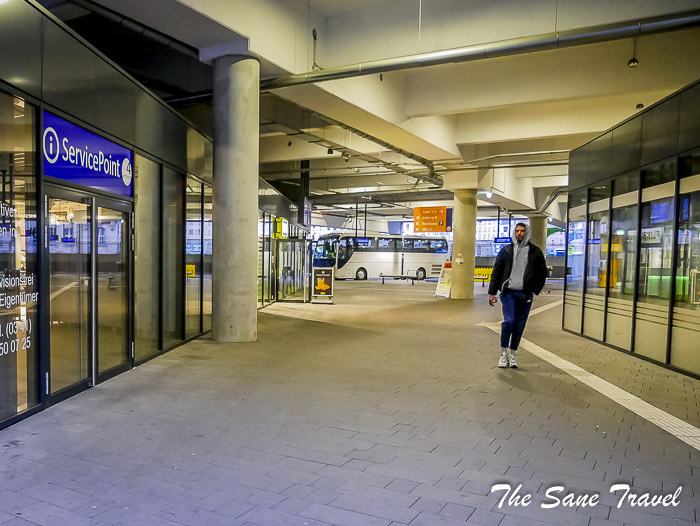
CoffeeCloud
This is an adorably cute small spot, where the coffee is surprisingly good for a station café. The staff is very kind and they have a decent selection of coffee specialities and signatures! I had tea by the way. And I charged my phone which was very much needed.
Address: Sachsenseite 3
Like it? Pin it!
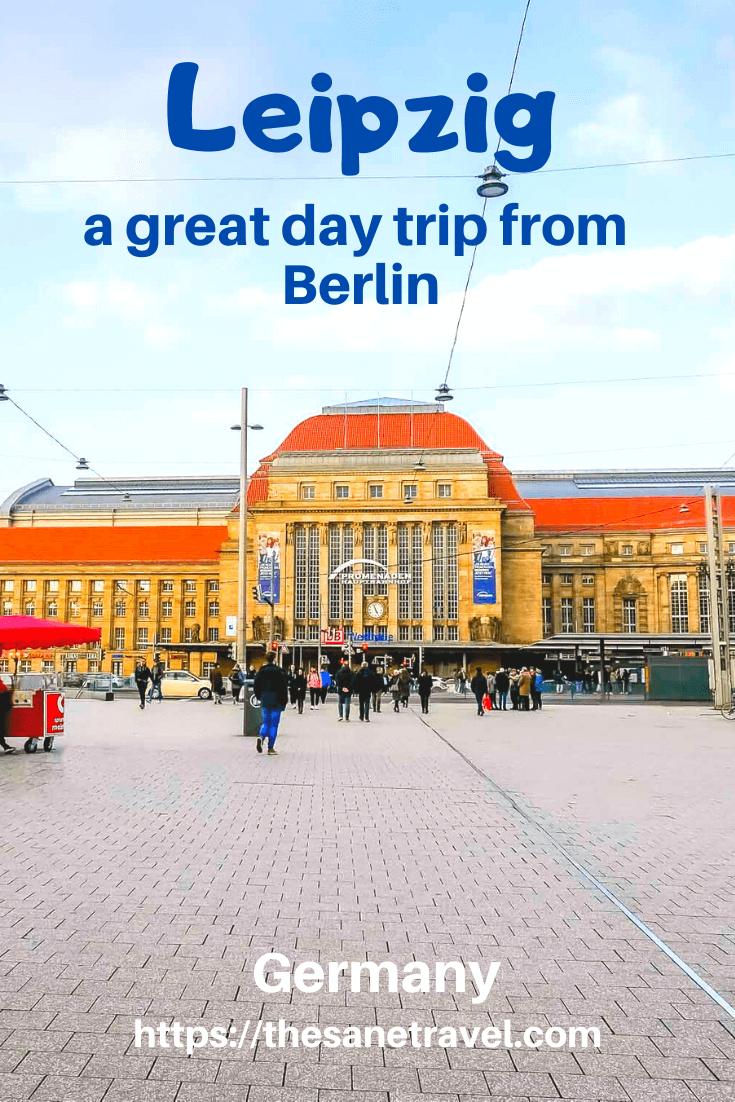
What did you think? Have you been to Leipzig? Or perhaps you’re thinking of visiting in the near future? Either way, I’d love to hear from you so please add your comments below.
Author: Anita Sane

About the author
Anita is a part-time traveller, passionate photographer and a retired career woman from Latvia, travelling mostly solo for more than 15 years. She is a skilled travel planner who plans and executes her travels by herself. Anita wants to show you how to travel the world and open your mind to new experiences. Follow her on Facebook, Instagram, Pinterest, Twitter and Bloglovin.

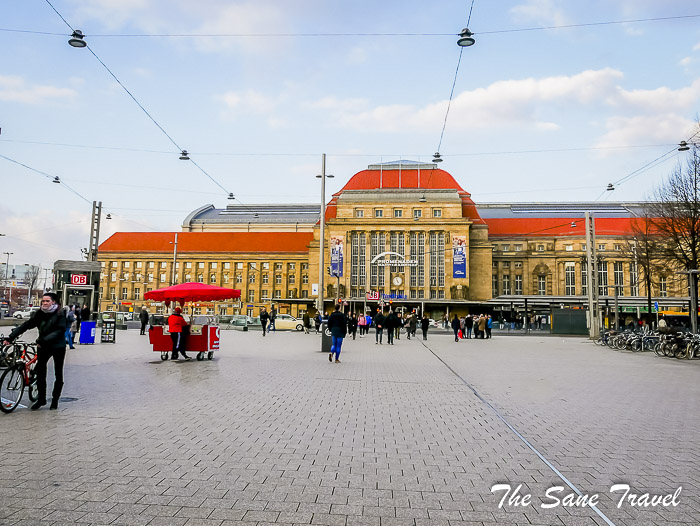
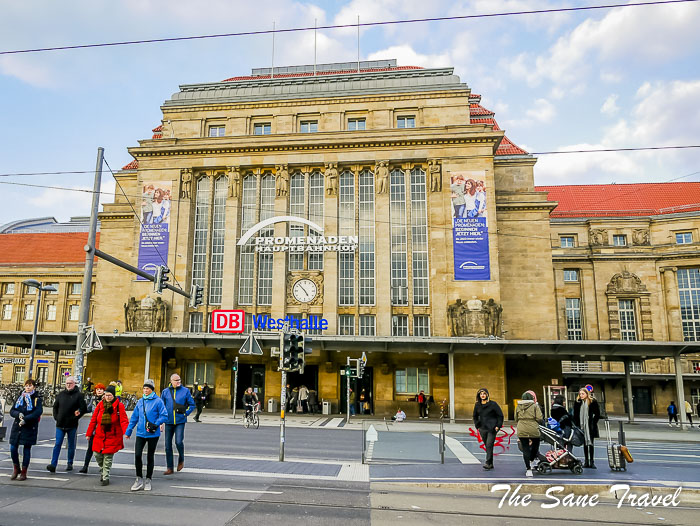
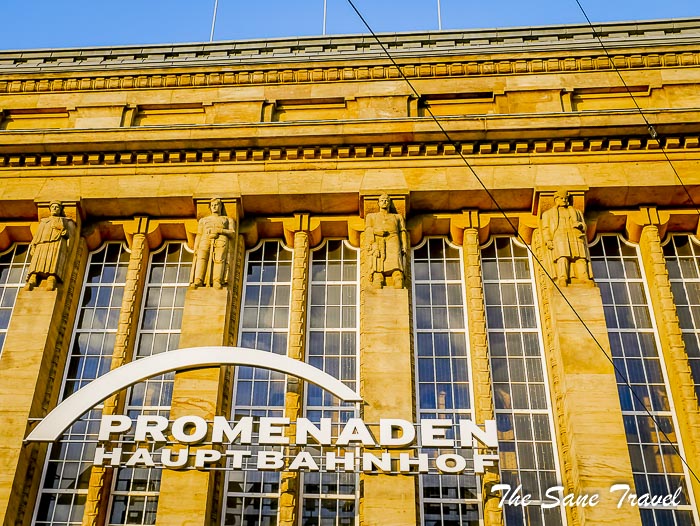
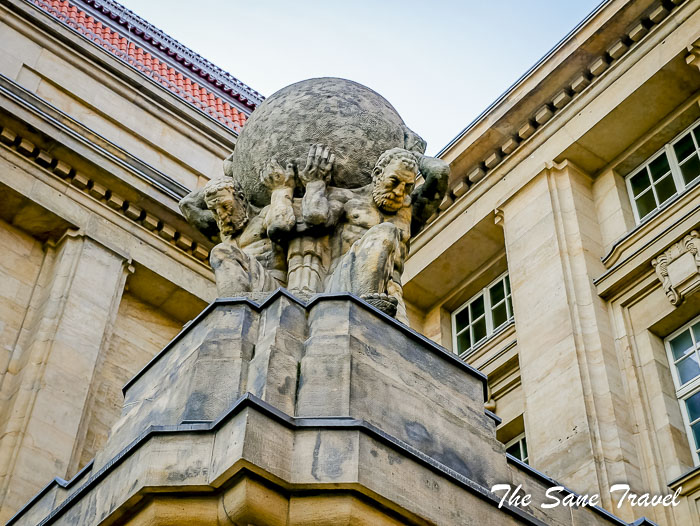
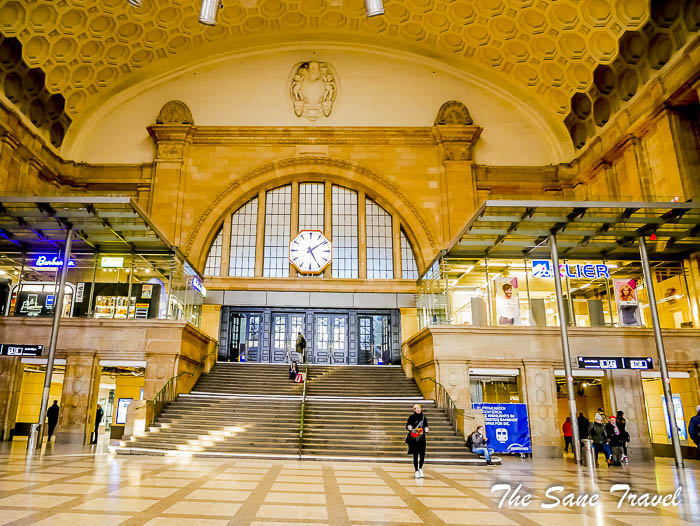
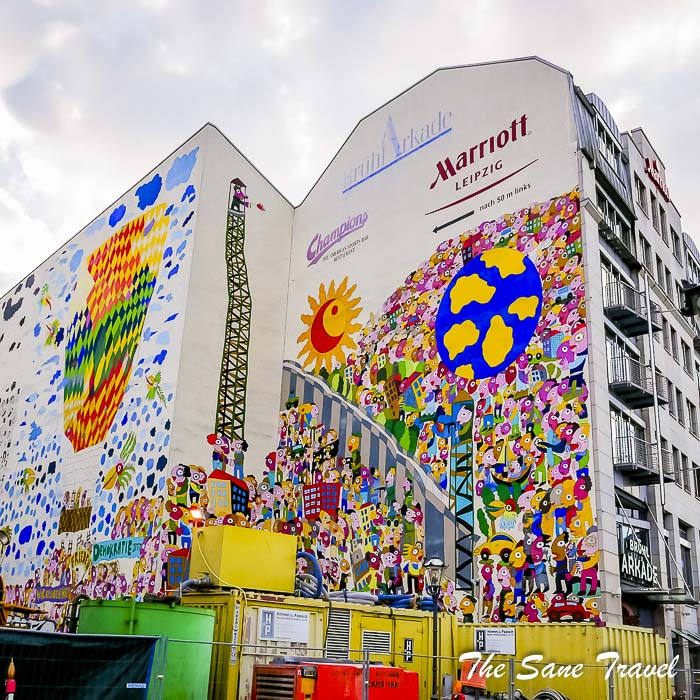
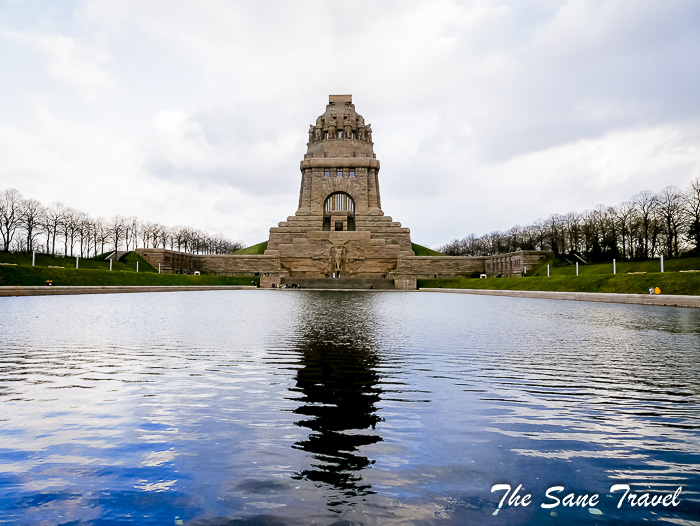
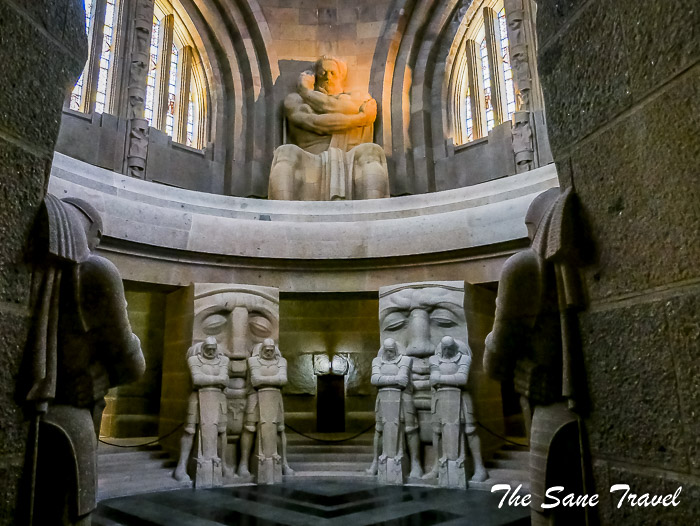
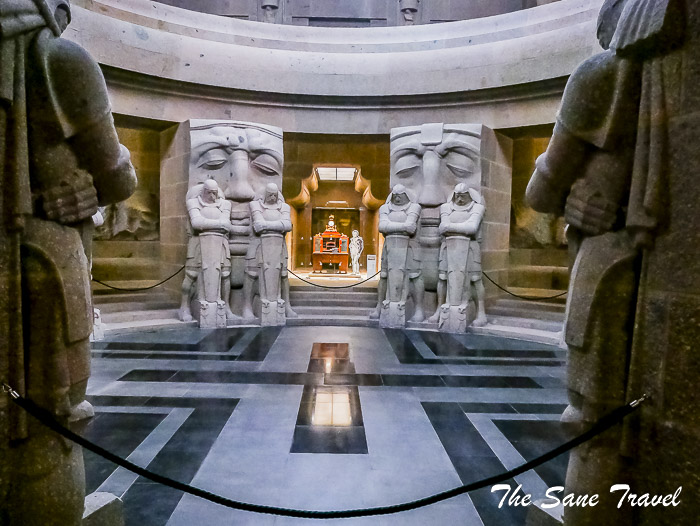
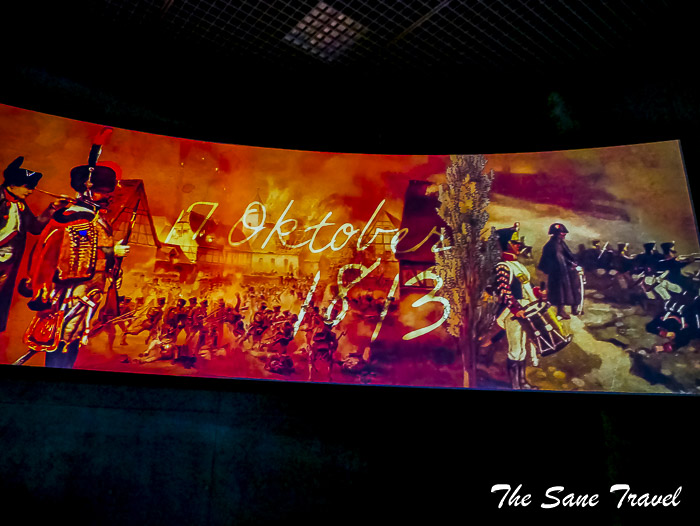
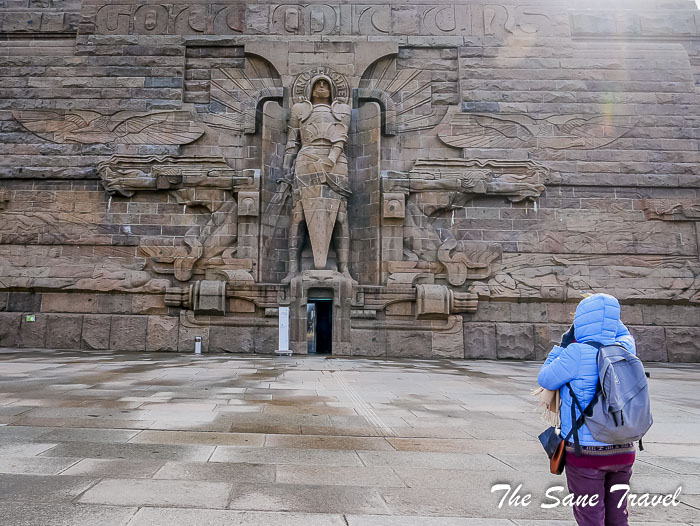
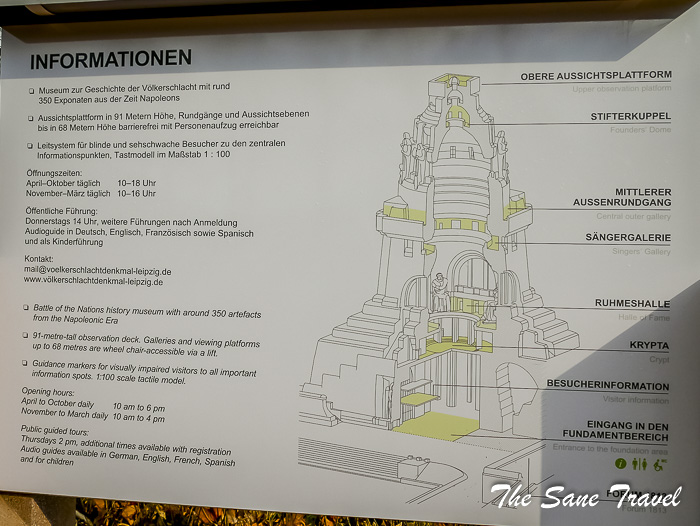
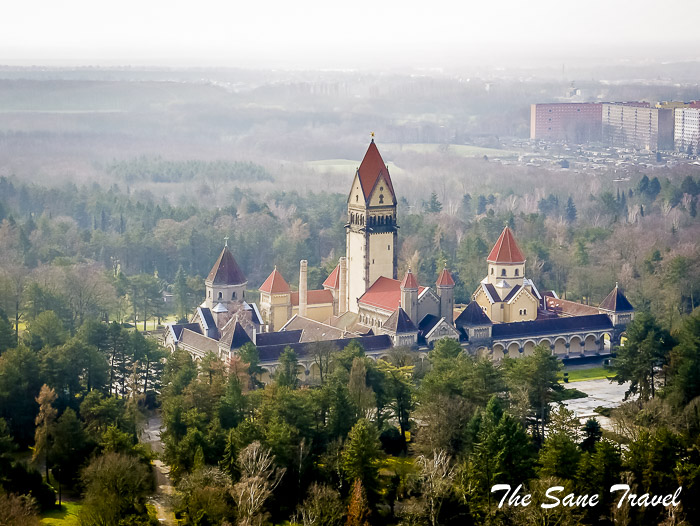
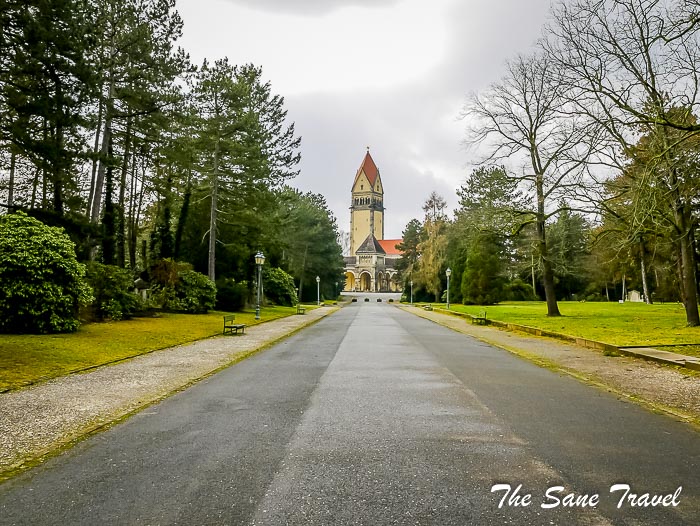
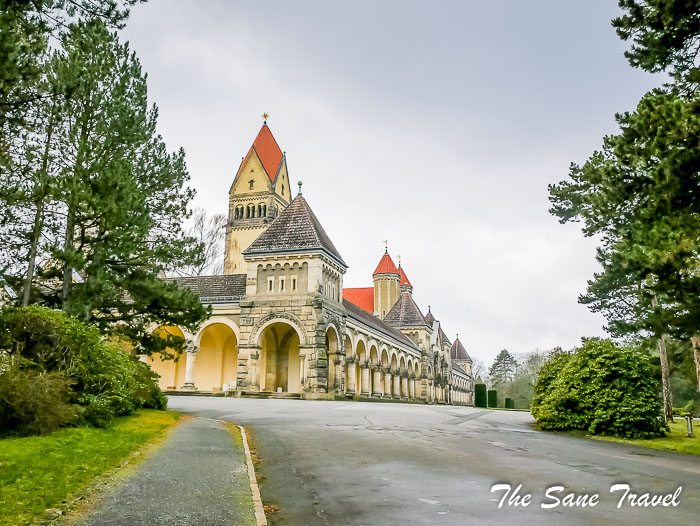
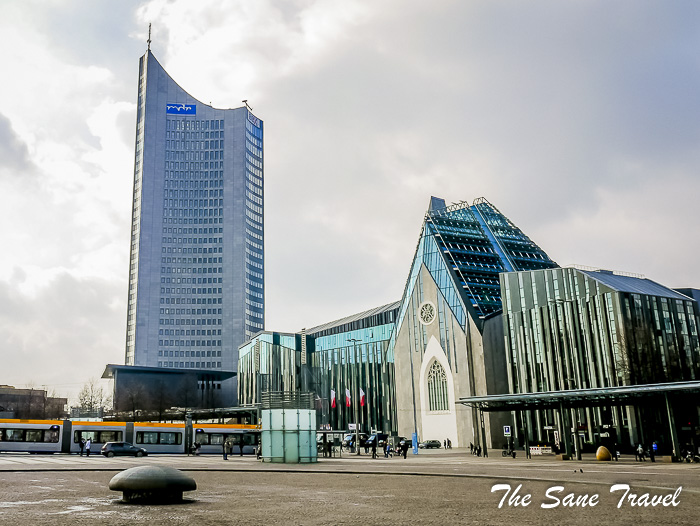
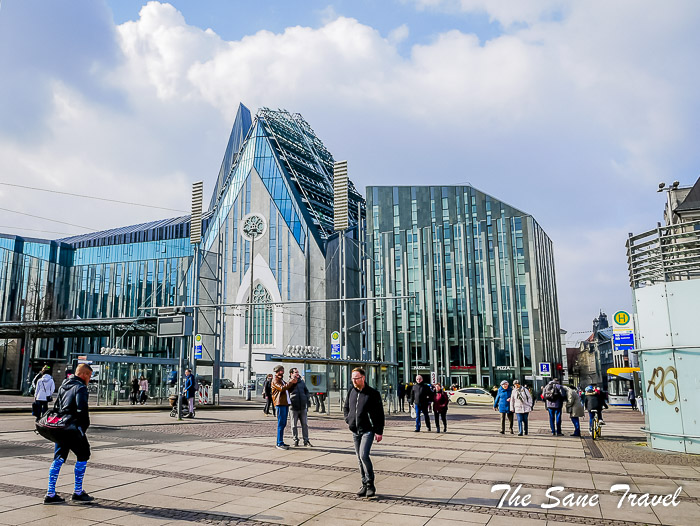
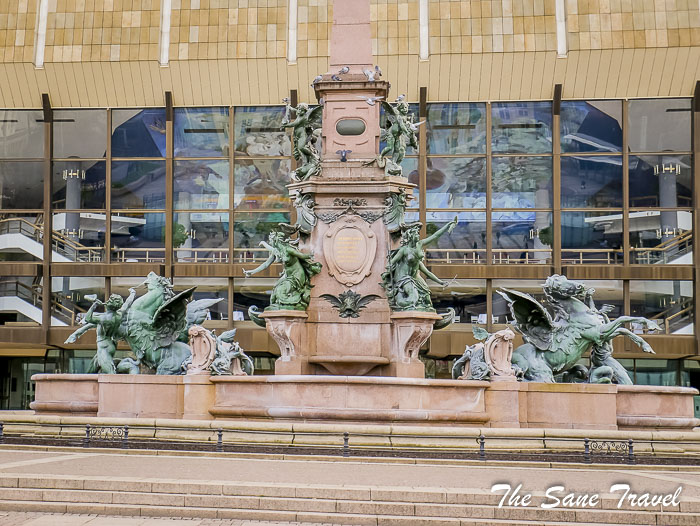
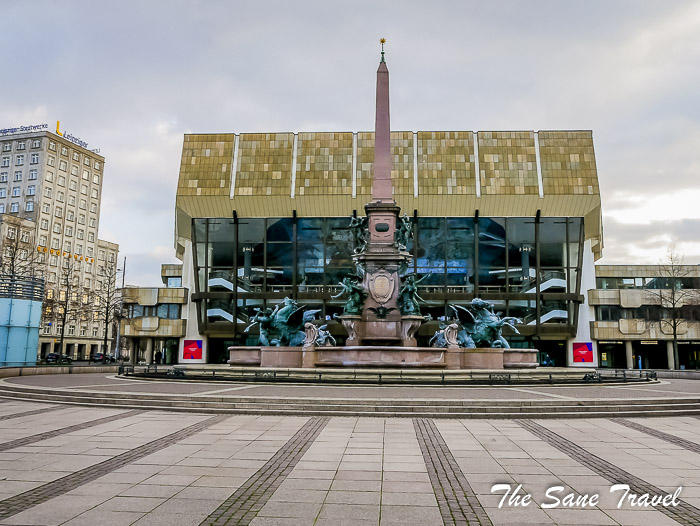

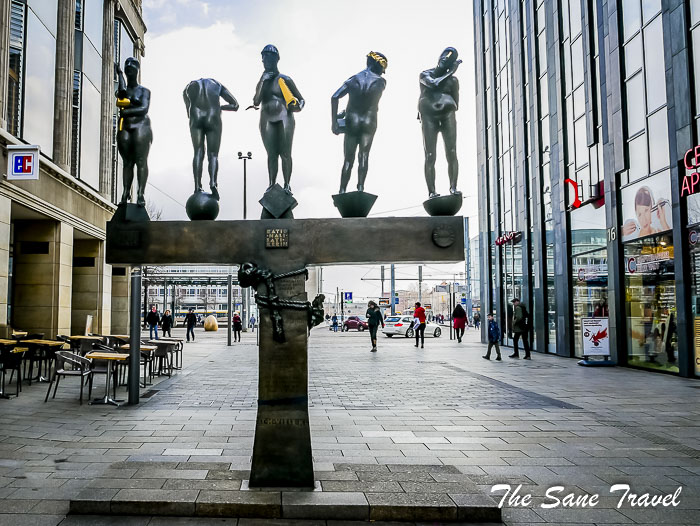
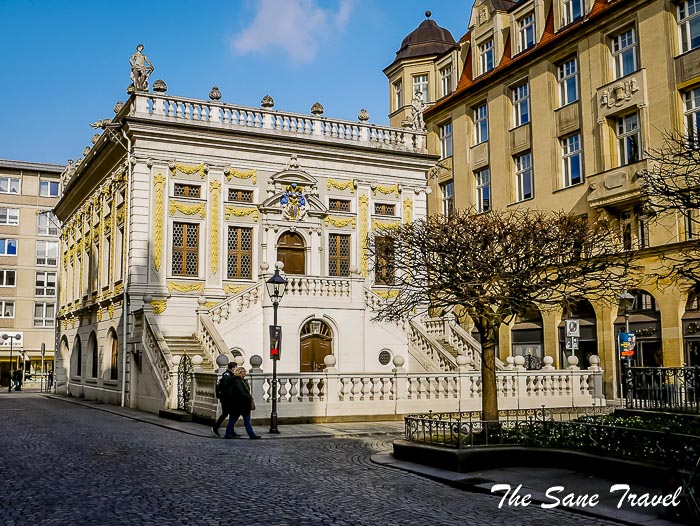
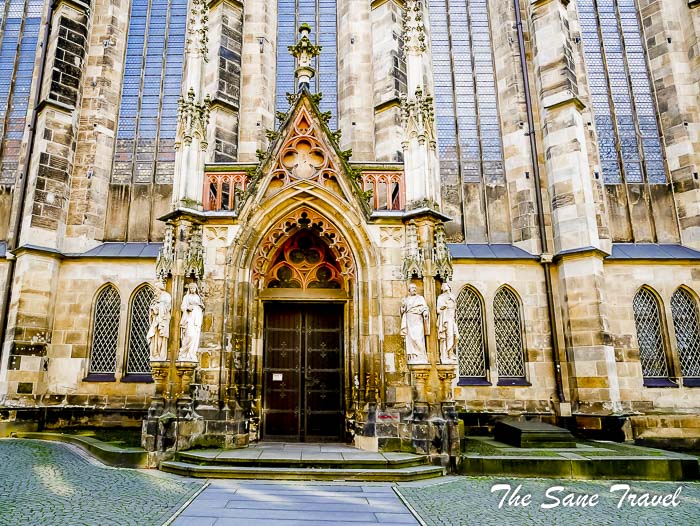
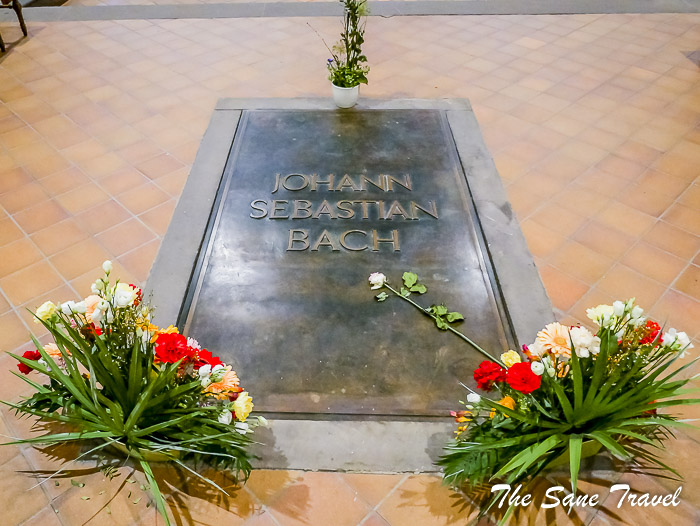
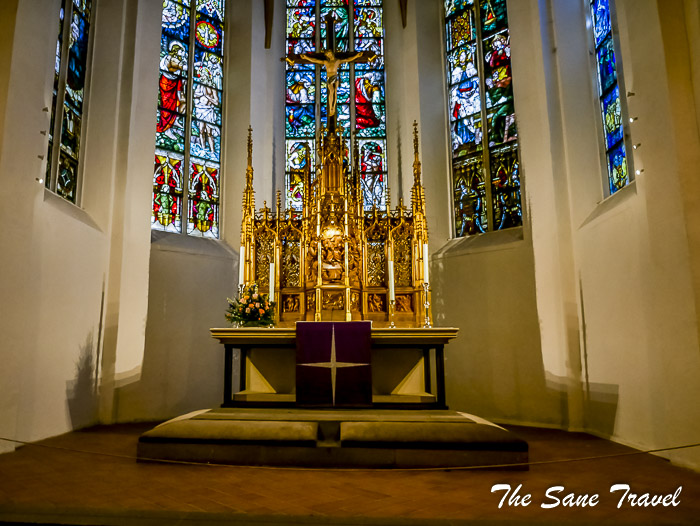
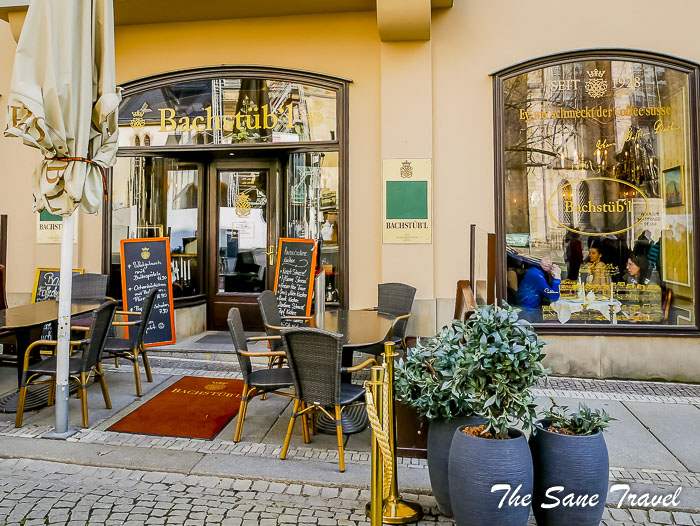
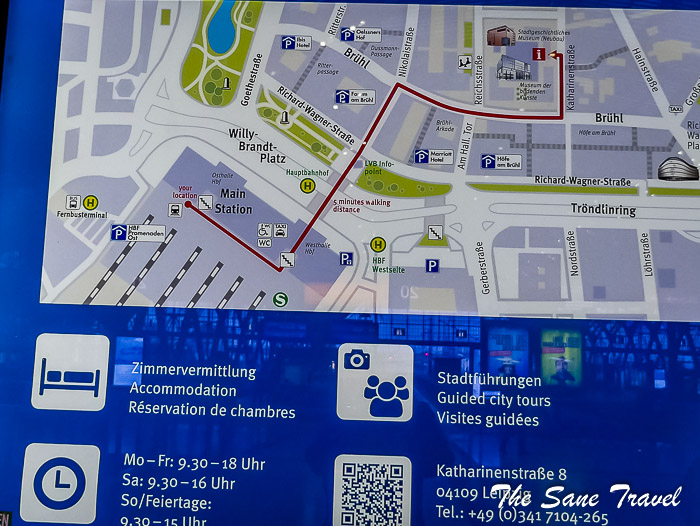
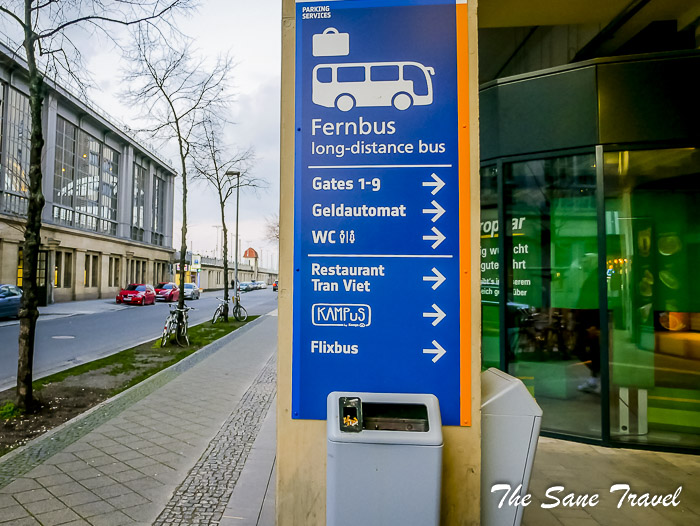
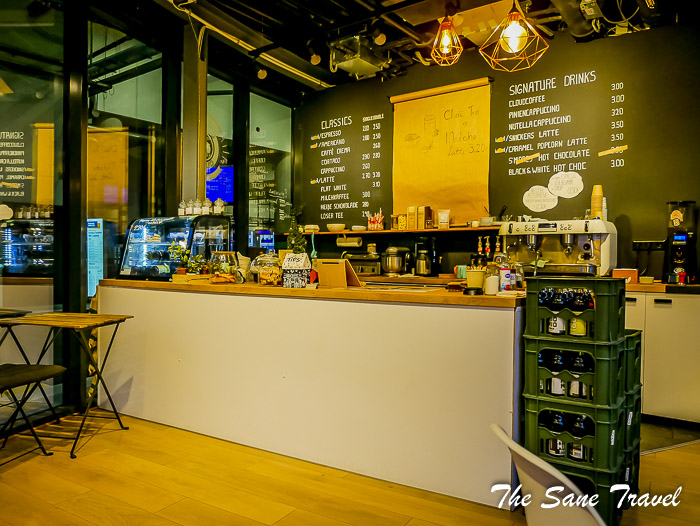
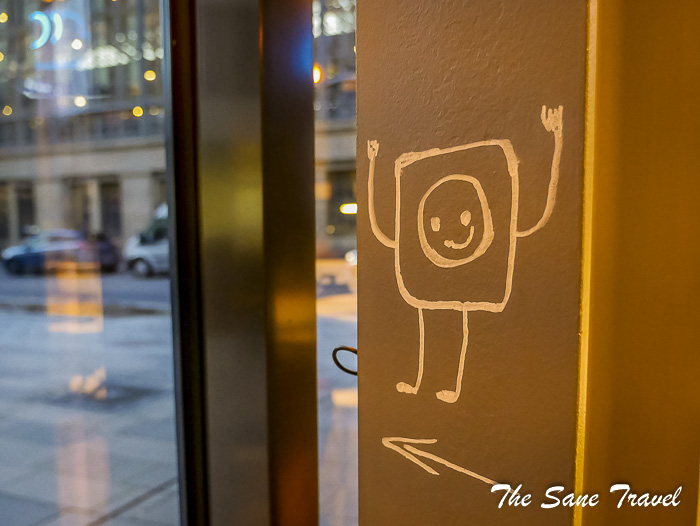
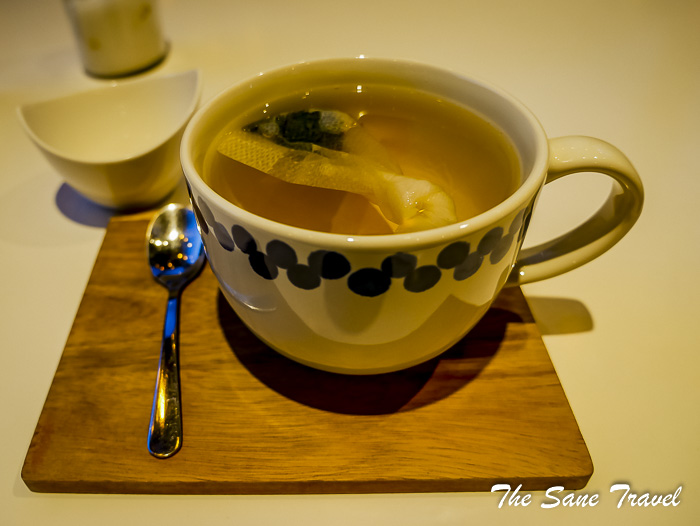
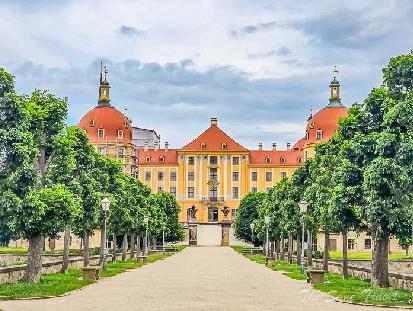
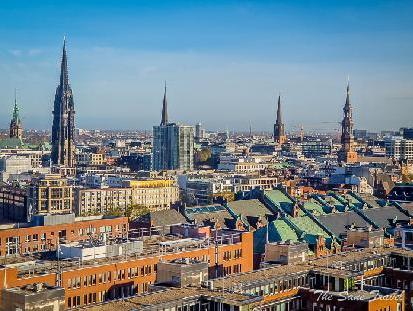
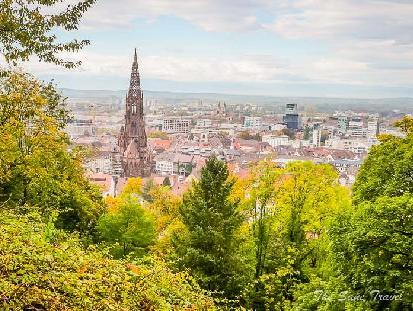
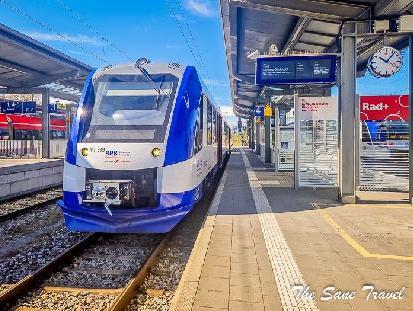
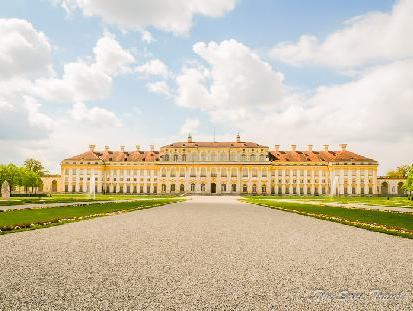
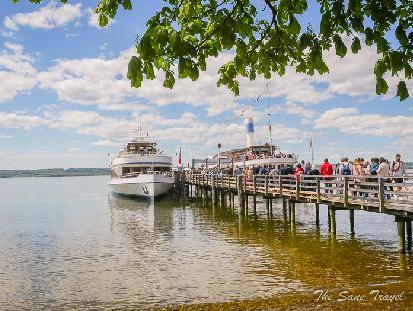
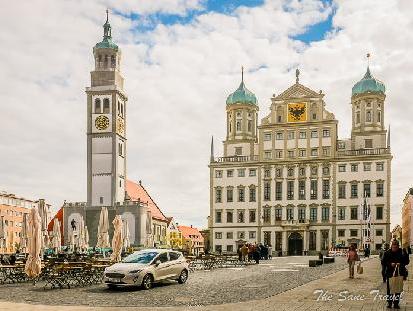
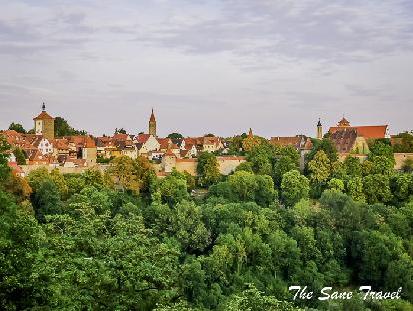
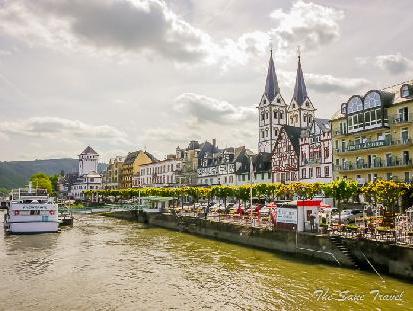
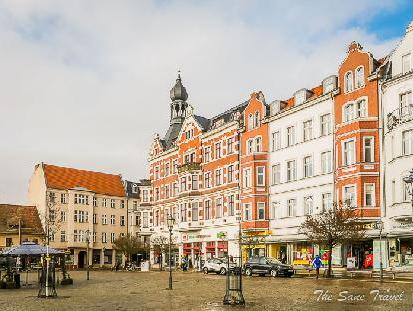
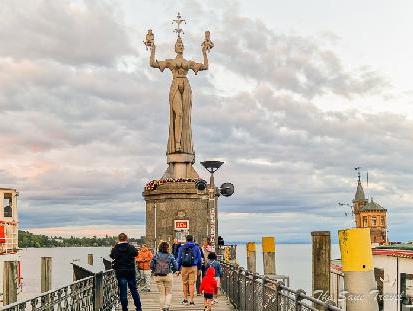
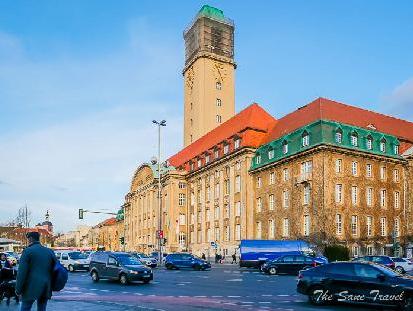

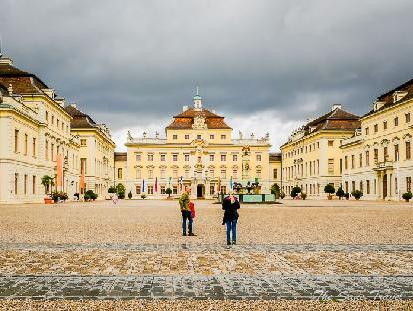
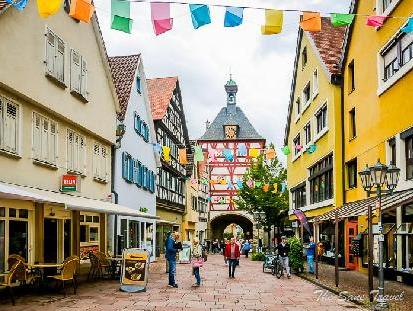
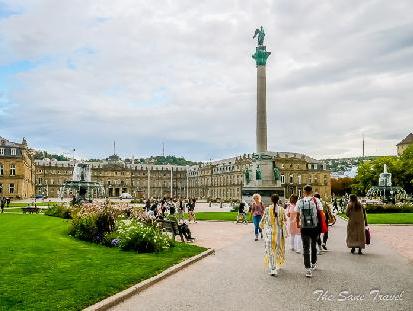

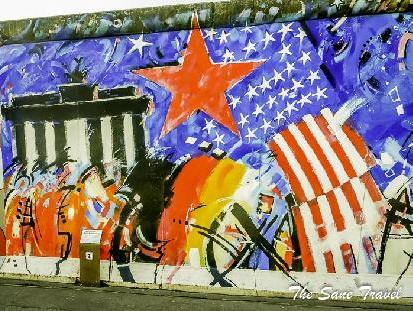
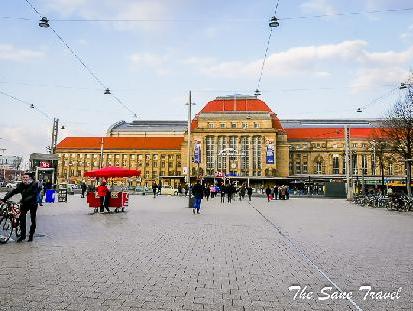
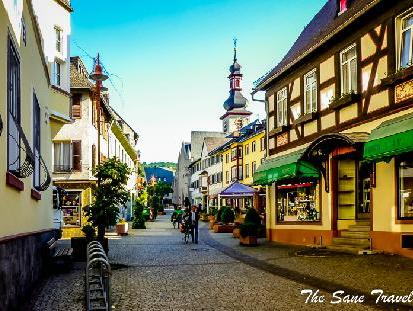
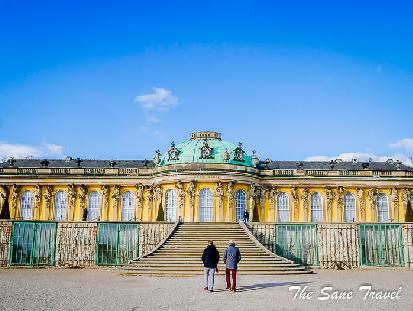
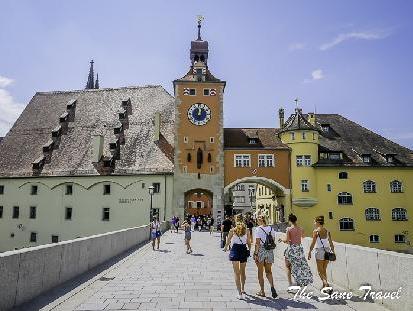
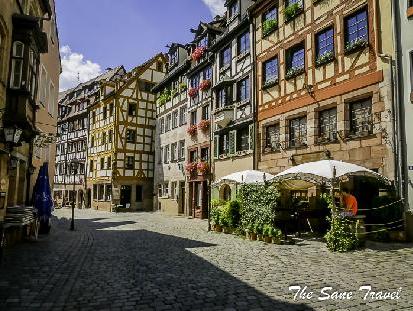
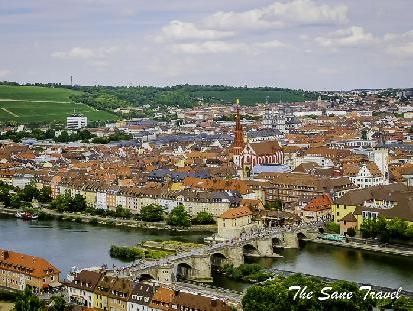
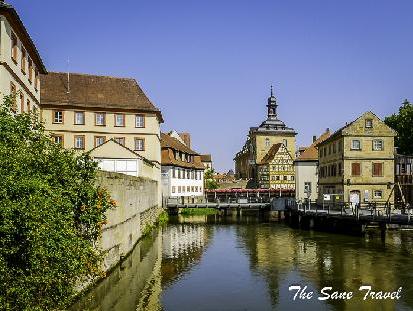
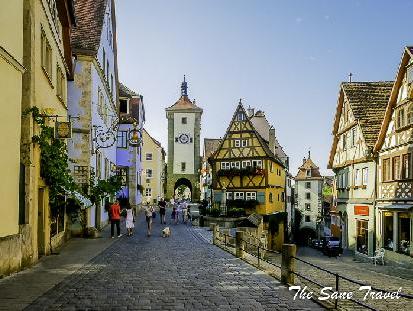
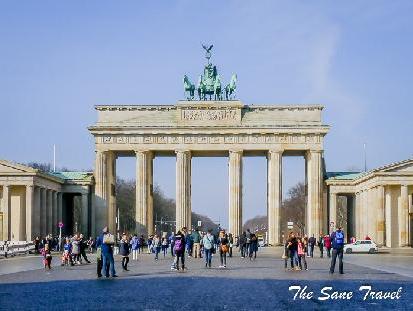
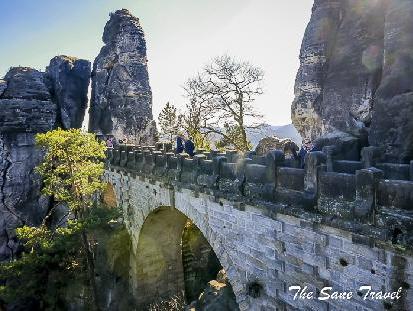
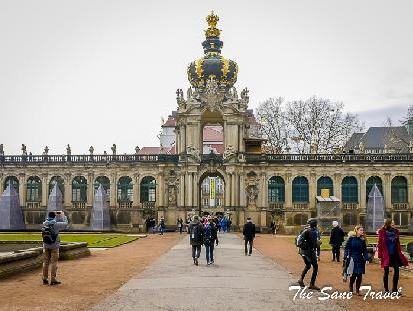
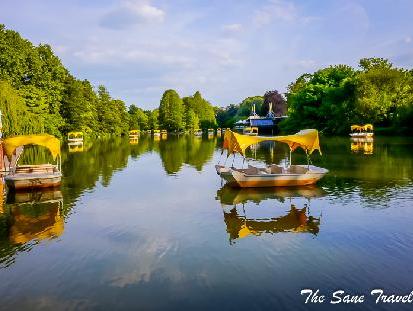
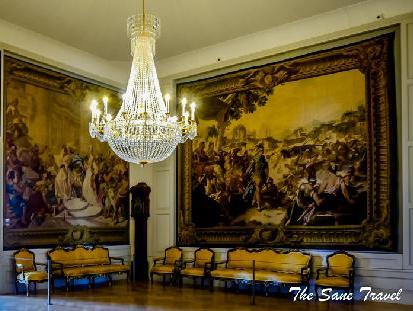
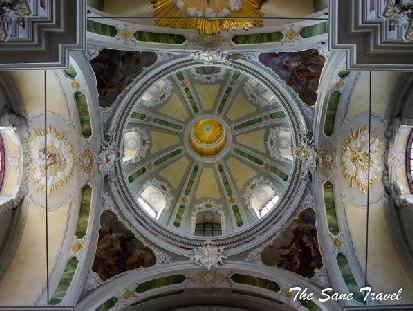
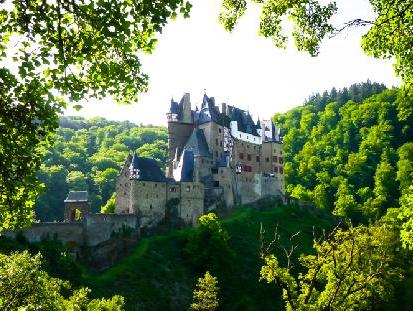
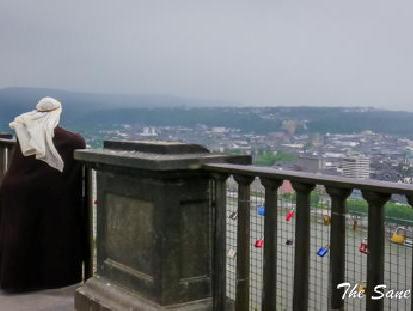
Report
My comments